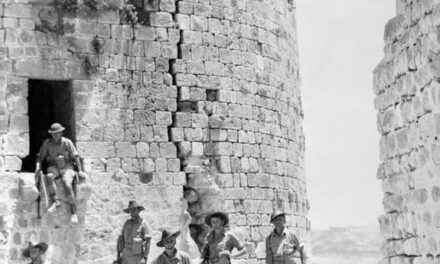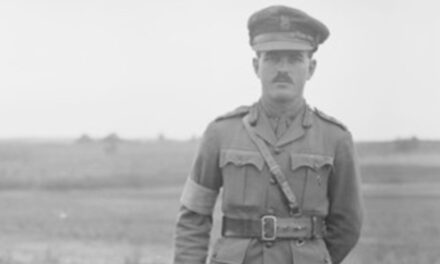THE ANGLO-ZANZIBAR WAR: THE SHORTEST WAR IN HISTORY
Reading time: 7 minutes
The story of the shortest war in history begins with a treaty between colonial powers. In 1890, Britain and Germany signed the Heligoland-Zanzibar treaty which secured spheres of influence in East Africa. Germany was given control of mainland Tanzania, while Zanzibar fell under British control.
Zanzibar received protectorate status and along with it, a new ‘puppet’ Sultan to take care of the region. The sultan position was given to Hamad bin Thuwaini, a supporter of British imperial control. His assassination ultimately led to the Anglo-Zanzibar war.
By Madison Moulton
Before the Anglo-Zanzibar War
Before Zanzibar fell under British rule this small island country off the coast of Tanzania was ruled by the Sultans of Oman. The Sultans had expelled some Portuguese settlers in 1698. In the mid-1800s, Zanzibar was declared independent by Sultan Majid bin Said. The British Empire recognized this independence and respected the sovereignty of its sultanate, for the most part.
The rising German interest in East Africa led to the two powers contending for trade route rights and territory. In an attempt to prohibit slavery in East Africa, Sultan Khalifah granted Britain land rights to Kenya, while Germany was given Tanganyika. Tensions arose, namely among the Arab ruling classes, who were angered by the disturbances of invaluable trade as a result of the land rights. Making matters worse was Germany’s refusal to fly the flag of the Zanzibar Sultanate. Their refusal to do so and mounting tensions led to several deathly clashes between the local population and German authorities.
Despite the bloody clashes, Khalifah granted extensive trading rights to the Imperial British East India Company (IBEIC). The IBEIC, with the help of Germany, set forth to block the continuing slave trade.
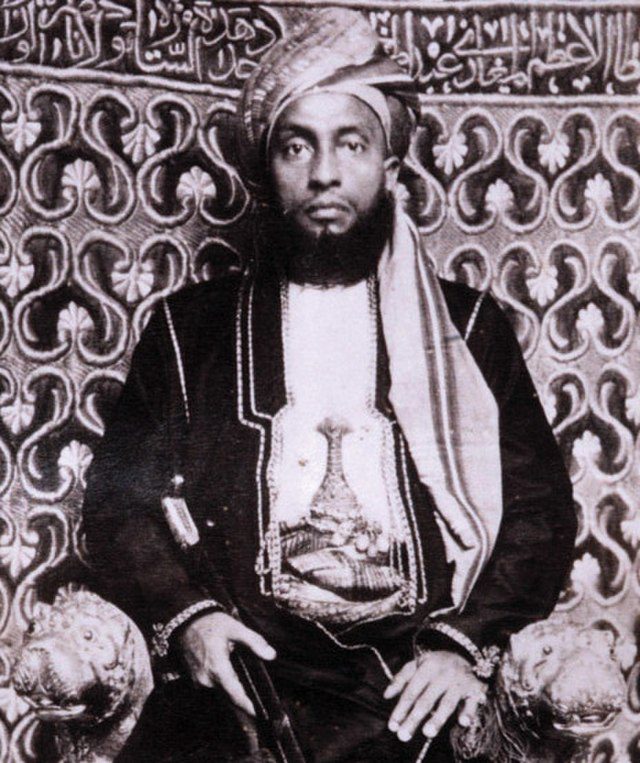
When Khalifah died in 1890, Ali bin Said succeeded him. Sultan Ali banned the sale of slaves (not the ownership of them) and declared Zanzibar a British protectorate, which gave the British veto over any future Sultan. 1890 was the same year that Britain and Germany signed the Heligoland-Zanzibar treaty, which established set areas of interest in Zanzibar. Germany relinquished all their rights to the United Kingdom, giving the British even more influence and control over the country.
Hamad bin Thuwaini succeeded Sultan Ali in 1893. His pro-British stance led to many calling him an imperial puppet. Many were concerned over the increasing British control and the loss of the valuable slave trade.
Tensions Rise
Sultan Hamad died suddenly on 25 August 1896. His nephew, Khalid bin Bargash, quickly succeeded him, accompanied by rumours of assassination. The new Sultan moved into the Zanzibar town palace without British approval. This was a direct contravention of the treaty between Ali and the British authorities. Further, the British preferred a different candidate for Sultan.
Khalid ignored warnings from the British authorities and advisers, gathering an army of loyal followers. Among the many civilians were 700 Zanzibar Askari soldiers. His artillery was just as impressive, consisting of several Maxim machine guns, a Gatling gun, a 17th-century canon and two 12-pounder field guns. These were aimed directly at the harbour holding British ships. They topped off their military power by taking possession of the Zanzibar navy.
In return, the British assembled their own force consisting of 900 Zanzibar Askaris, 150 sailors and marines. A portion of the naval party were to control any riots started by civilians. Another smaller group was tasked with guarding the British citizens who had gathered at the British consulate. The boats on which they arrived were military-grade too.

In-between amassing armies, Sultan Khalid continued to ignore messages of warning from the British authorities, declaring that his official proclamation as Sultan would take place at 15:00. This, as the authorities attempted to reiterate, was an act of rebellion against the crown. Nevertheless, a mere 30 minutes after Sultan Hamad was buried, Khalid was proclaimed the new Sultan of Zanzibar. Unfortunately, the British authorities couldn’t act without government approval. All they could do was insist that all flags should be flown at half-mast (which Khalid refused to do) and to instruct the consuls to not recognise Khalid as Sultan. They agreed.
26 August 1896
On 26 August, two more British protected cruisers arrived on the shores of Zanzibar. Onboard were even more marines and soldiers. With the reinforcements came the much-awaited approval telegram from Britain. It stated that the British authorities were authorised the use whatever force and means necessary to remove Khalid from power.

Before they attacked, the authorities attempted to negotiate one last ultimatum – Khalid was to lower his flag and leave the place by 9am the next morning, or they would open fire. Sources say the night that preceded the war was eerily quiet.
The 40-Minute War
An hour before Khalid’s deadline, he sent out a message wishing to parley. However, the consuls declared that his only salvation would be to surrender to the terms of the ultimatum. To which, of course, Khalid stated that he would not, calling the British authorities’ bluff on their threats.
As 09:00 struck, the British ships were ordered to bombard the palace. Two minutes later, two ships simultaneously opened fire on the palace. Almost 3,000 slaves, defenders, and servants were in the palace at the time. Despite the barricades, there were several casualties. Some reports say that Khalid, along with several of his high-class followers, fled the palace the minute the first shot hit. Others state that he remained in the palace for some time before fleeing.
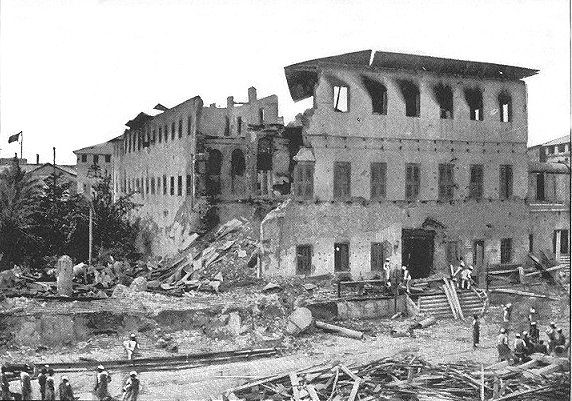
Shelling ceased at approximately 09:40. The palace was in flames, the Sultan’s artillery silenced, and his flag removed.
Aftermath
Approximately 500 Zanzibar civilians were killed or wounded. Most of the dead were from the palace. Exact numbers aren’t known, but Khalid’s artillerymen were apparently decimated. Chaos erupted once more when several townspeople partook in opportunistic looting. 20 more people died as a result, causing the British authorities to send 150 British Sikh troops to restore order.
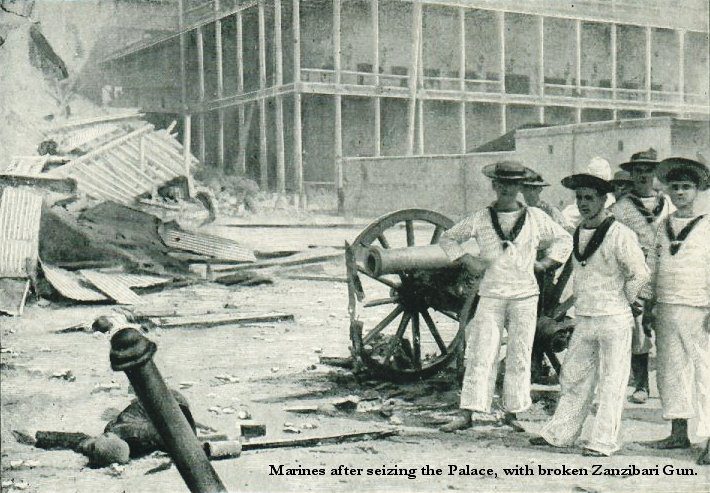
Khalid and a few of his followers sought refuge in the German consulate, which was heavily guarded. British troops were stationed outside and nearby to capture Khalid and his supporters the minute he left. Meanwhile, the authorities sent extradition requests, but the German Consul refused. He stated that the treaty between Germany and Britain specifically excluded political prisoners. He promised that Khalid would be removed from the country without ever stepping on Zanzibar soil.
The German consul upheld his promise, by bringing a small boat to the edge of the consulate’s gate at high tide. Sultan Khalid stepped directly onto a German boat and was taken to Dar es Salaam in German East Africa. However, he didn’t evade arrest forever.
In 1916, he was captured by British forces during World War I and the East African Campaign. Khalid was exiled to Seychelles and Saint Helena. Afterward, he was allowed to return to East Africa, where he lived out the rest of his life.
Khalid’s civilian supporters weren’t as lucky. The British forced them to pay reparations covering the cost of the short war and for the damage caused by the looting. All of which amounted to 300,000 rupees.
Despite this war being the shortest in history, lasting approximately 38-45 minutes, it was still very bloody.
Articles you may also like

Who were we fighting at Gallipoli?
In the annual discussion of the Gallipoli campaign Australians are subjected to a variety of hyperbole and parable as commentators and reporters offer up the same old chestnuts for want of something else to say. That at Anzac Cove ‘our nation was born’, that it ‘came of age’ or that Australian forces at Gallipoli were […]

“Vinegar Joe” Stilwell: the Story of America’s Man on the Ground in WW2 China
Reading time: 12 minutes
As famed as American commanders like Dwight Eisenhower and Douglas MacArthur are today, one of the most important is the relatively little-known Joseph Stilwell.
He was one of its leading experts on a country that was to play a pivotal role in the history not just of the war, but of the 20th century: China.
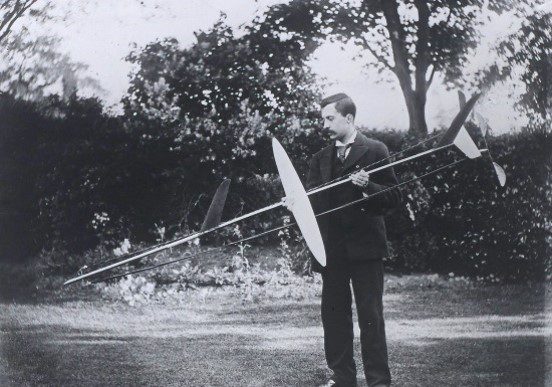
Frederick Lanchester and why quantity has a quality all of its own
Reading time: 5 minutes
Lanchester turned his mind to the subject of aerial warfare. In particular, he realised that the nature of war in the air—a novelty at the time—was fundamentally different to that of the slaughter underway on the ground below.
The text of this article was commissioned by History Guild as part of our work to improve historical literacy. If you would like to reproduce it please get in touch via this form.



